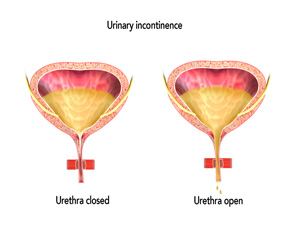
What is Urinary Incontinence?
Urinary incontinence is the loss of normal control of the bladder and involuntary loss of urine. Many people with urinary incontinence are too embarrassed. Urinary incontinence is normal in young children, but is not considered normal in adults.
Urinary incontinence is more common in women than in men. Older women experience urinary incontinence more often than younger women. The probable cause for the higher incidence in women can be attributed to pregnancy and childbirth, menopause, and the structure of the female urinary tract.
Symptoms
Individuals with urinary incontinence may experience loss of urine in association to specific activities, such as coughing or sneezing, loss of urine with strong urges to urinate, or loss of urine without any sensation or related symptoms at all.
Urinary incontinence may be caused by any of these factors:
- Weak muscles in the lower urinary tract
- Problems either in the urinary tract or in the nerves that control urination
- Physiological statuses such as pregnancy, childbirth, weight gain or other conditions that stretch the pelvic floor muscles
- Overactive bladder muscle
- Urinary tract infection
- Constipation
- Bladder cancer or bladder stones
- Blockage within the urinary tract
- Neurological disorders
Urinary incontinence can be categorized into five basic types depending on the symptoms:
- Stress Incontinence
- Urge Incontinence
- Overflow Incontinence
- Functional Incontinence
- Mixed Incontinence
Stress Incontinence: Leakage of small amounts of urine during physical movement such as coughing, sneezing, lifting heavy objects, and straining that suddenly increases the pressure within the abdomen.
Urge Incontinence: Leakage of large amounts of urine at unexpected times, including during sleep, with sensation of strong need to urinate.
Overflow Incontinence: Uncontrollable leakage of a small amount of urine because of an incompletely emptied bladder, particularly with physical activity.
Functional Incontinence: This refers to urine loss resulting from an inability to get to a toilet.
Mixed Incontinence: Mixed incontinence is the presence of two or more types of incontinence in an individual. Most commonly, urge and stress incontinence occur together.
Diagnosis
Symptoms remain the mainstay of diagnosis, but sometimes diagnostic testing will be required.Test may include a bladder stress test, urine analysis, and urine culture, ultrasound diagnosis, cystoscopy, and urodynamics.
Treatment
Treatments are specific to the type of incontinence you are experiencing and your sex. Your doctor will tell you about what options are available for you.
